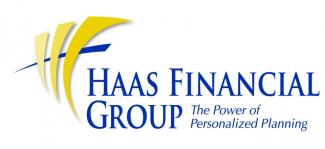Step 1: Aligning Values
At the start of our process, we prioritize getting to know all we can about you and where you are on life-s journey. We'll ask questions like "What led you to reach out to us?" and "What are the things you care most about in life?" We also strive to learn about your thoughts and feelings toward money, and about the values that drive your decisions. These insights guide our work together, allowing us to tailor advice that aligns your values, vision, and wealth.
Podcast Episode #90: What Is A Financial Purpose Statement?
Step 2: Goals & Objectives
It's important to define what you're working towards so we ask questions to better understand your goals and objectives, and also, what you're hoping to avoid. If you haven't defined any clear targets yet, don't worry – we can lead you through this process and focus on developing positive habits instead. By discovering your purpose and cultivating positive habits, we'll be able to help you prioritize how to allocate your resources and get pointed in the right direction.
Podcast Episode # 63: How To Plan When You Don't Have A Well-Defined Goal
Step 3: eMoney Decision Center
To get a clear picture of your financial situation today, together we'll utilize a financial tool called eMoney. eMoney is used to organize your financial life and provide a snapshot of where you are today, relative to your goals. It is also utilized to build out scenarios for the future, assess potential action steps or tradeoffs necessary to make your plan work. eMoney creates comprehensive reports such as balance sheets, cash flow reports, and tax estimates. This information is used to drive our ongoing planning conversations and assess progress towards your financial goals in the "Decision Center" - our planning playground!
Check out our example client profiles to see how we use eMoney to drive our financial planning conversations.
Step 4: Personal Strategic Plan
At the end of our initial financial planning process, we will provide you with a summary of our observations and recommendations, highlighting the next steps to be executed by whom and by when. The significance of each action item is connected back to your values identified in Step 1 of our process - tying it all together! We don't want to overwhelm you though, so we help break things down into shorter time periods and small steps to ensure we're partnering to make good decisions for the present, and future. Our goal is to work through this initial plan within the first 6-12 months of working together.
For these services, it's important that we be crystal clear about how we are compensated. We ONLY get paid to give advice through planning and/or investments. There is no cost to explore a relationship with us.
Step 5: Keeping You on Track
We look at every new relationship as a long-term relationship. We believe it’s important to regularly review what matters most to you and reassess your financial priorities to ensure that we’re aligning your finances with what you value and hope to achieve in the future. Are there new variables to consider? How does your change in priorities affect the plan? Our process includes updating your data in eMoney, reviewing outstanding items, and reassessing how we can continue to help you through the different levels of ongoing planning that we offer.
Podcast Episode # 99: Why It's Important To Audit Your Financial Plan
INVESTING WITH US.
The appropriate investment allocation for someone should be the byproduct of two key conversations:
- What does the financial plan say is an appropriate allocation for risk and growth potential?
- How does that person feel about investment risk?
That's why investing with the Haas Financial Group only occurs after going through a financial planning process. It's that process that allows us to confidentially recommend an investment plan based on what we need to manage for you, your time horizon, your liquidity needs, and your appetite for risk.
Our approach to building investment plans is very fundamental. We believe the practice of spreading investment around and creating exposure to different types of asset classes can help reduce volatility over time. We also believe that markets can be irrational at times, because as humans, we are irrational at times. There are many factors that can move the markets, making it difficult, if not impossible to predetermine when to specifically buy or sell any one investment with any degree of precision. Hence, we believe you manage risk via asset allocation and diversification, not via timing trading. In summary, build an investment plan that matches your financial plan, diversify, tweak as necessary and adjust as goals and priorities change.
Ep # 30: What Are Our Investment Philosophies?
Ep # 69: Managing Investments By Myself. Should I or Shouldn't I?
How much risk should you take?
It's our job to balance the need for long-term investment returns, with the reality that investing is emotional and at times losses can be difficult to stomach. So understanding how you feel about risk is important, and so is how you react to those feelings. There is a difference between risk tolerance and risk composure, but both are important. Because your ability to "stay the course" when things get tough is critical to long-term success. We help quantify your risk tolerance through a risk assessment tool called Nitrogen (formally Riskalyze). With knowledge of how you think and feel about investment risk, we then aim to smooth the investment ride for our clients and reduce the risk of negative surprises, based on the challenges we believe our clients face over their lifetimes, especially as the world around us changes.
How should you be invested?
Inflation, rising health care costs, and longevity remain major risks to retirement success. So, you will still need to balance your risk tolerance and time horizon delicately. We approach this challenge by employing a three-bucket theory to portfolio planning. The bucket approach is a strategy for funding short-term retirement cash-flow needs while also maintaining a diversified portfolio of stocks, bonds, and cash for long-term needs. The overarching idea is to set aside one to two years' worth of living expenses in cash (bucket 1), while using additional buckets to hold more volatile assets with higher potential returns for the later years of retirement; an intermediate-term component consisting mainly of bonds and balanced funds for income (bucket 2), and a long-term component for growth, featuring stocks and higher-risk bond types (bucket 3). This three-bucket theory, we hope, balances the expectations for long-term growth with the permission to be okay with short-term losses by having easy access to cash for any short-term needs, and opportunistic with stock investments for the long-term.

How do you stay on track?
Your investment plan is crucial in guiding your important financial decisions. It can help you determine when to rebalance your portfolio and what steps to take when you need to withdraw money. At Haas Financial Group, we provide the oversight to review your asset allocation and rebalance your portfolio, as necessary, through our disciplined investment process.
Maximize your retirement plan
We offer employer retirement plan oversight by utilizing a tool called Pontera that allows us to manage your employer retirement plan with ease. By using this tool, we can actively manage your allocation, make appropriate changes, and closely monitor your account. This not only saves you time, but also adds value to your retirement plan.
It's important to note that this service is optional and there is an additional cost for using Pontera and for our management services in this capacity.










